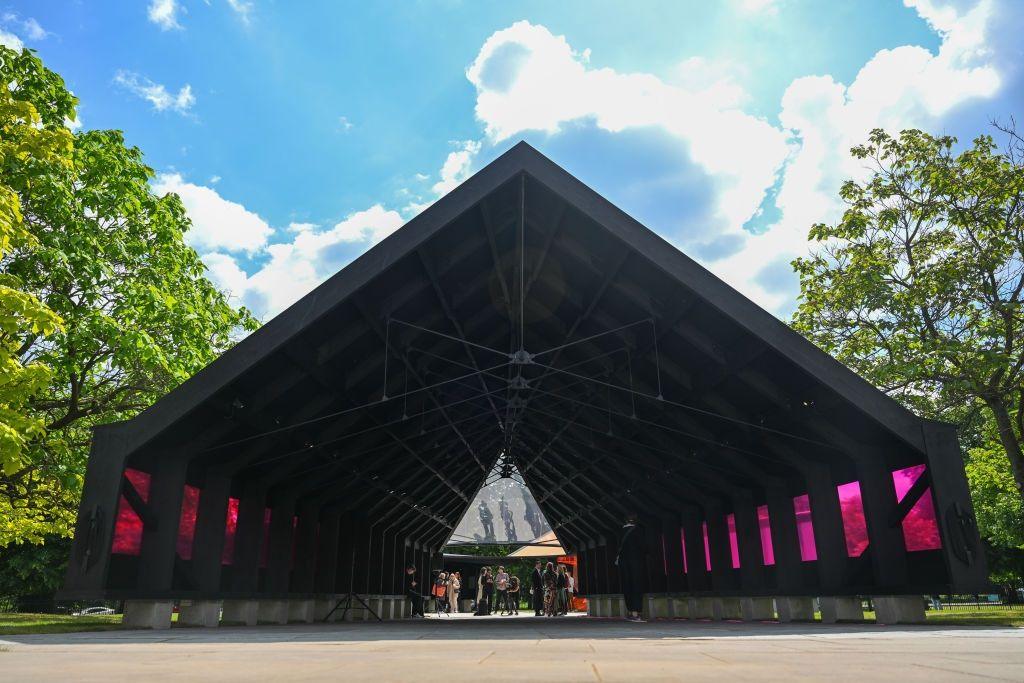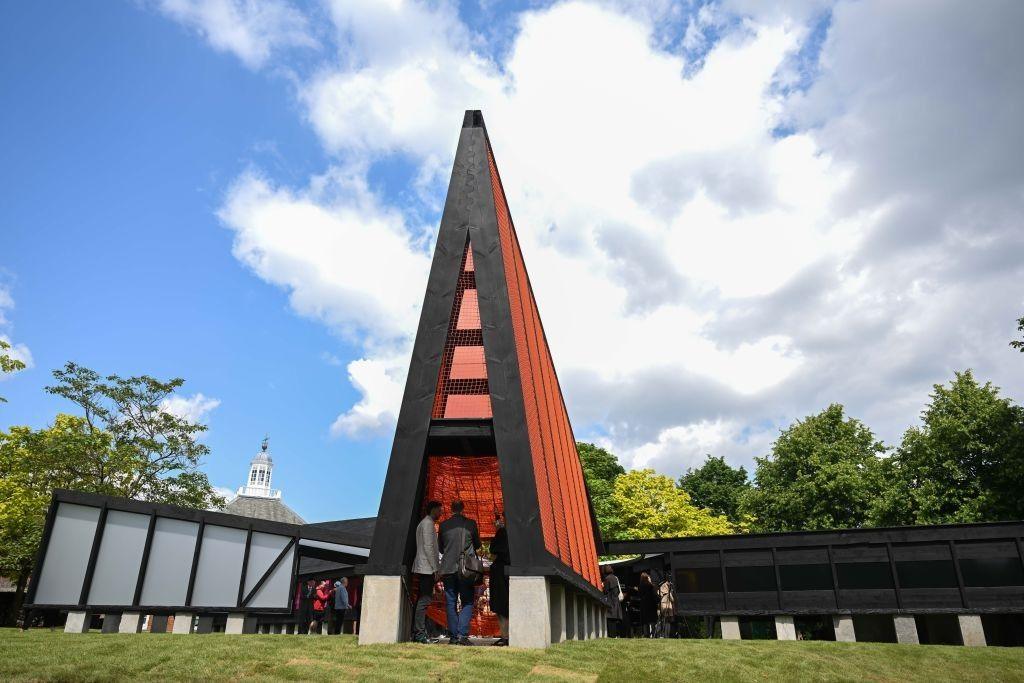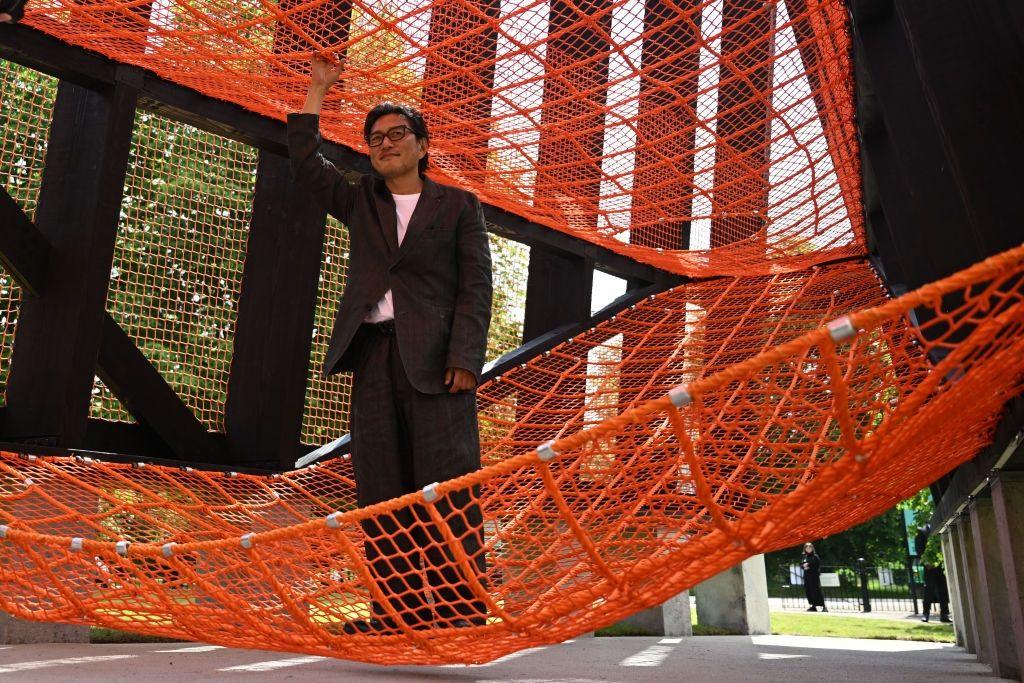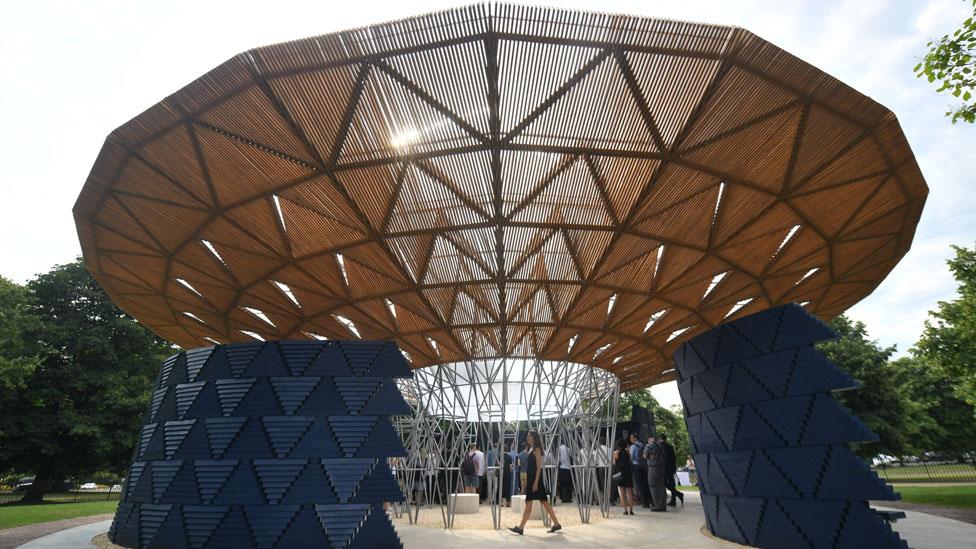Serpentine's pavilion inspired by Korean courtyard

- Published
An architect said he has taken inspiration from an open courtyard found in traditional Korean homes for this year's summer pavilion at the Serpentine Galleries in central London.
Archipelagic Void is the 23rd iteration of the Serpentine Pavilion in London’s Kensington Gardens and opens on 7 June.
It will host a soundscape, library and a series of performances and talks.
South Korean architect Minsuk Cho said he was "honoured and grateful" to unveil the pavilion.

The new structure is comprised of five “islands”, each unique in size and form.
Each island will host a different area including the gallery, library, an auditorium, a tea house and a play tower.
The islands leave a void at the centre inspired by an open courtyard, known as a madang, in traditional Korean houses.
Cho said: "To realise the pavilion, we began by asking what can be uncovered and added to the Serpentine site, which has already featured over 20 historical iterations at the centre of the lawn, from a roster of great architects and artists.
“To approach this new chapter differently, instead of viewing it as a carte blanche, we embraced the challenge of considering the many existing peripheral elements while exploring the centre as a void."

The gallery will be host to a six-channel sound installation created by musician and composer Jang Young-Gyu.
The music incorporates sounds from nature and human activities recorded in Kensington Gardens with traditional Korean vocal music and instruments.
The Library Of Unread Books has been created by artist Heman Chong and archivist Renee Staal.
The tea house is a nod to the history of the Serpentine South building, which originally served as a tea house until the early 1960s.
The pavilion also features a play tower with a bright orange net for visitors to climb.
The largest structure of the islands is the auditorium with benches built into its inner walls, providing an area for performances and talks.
'Growing Korea interest'
Cho told BBC News the growing international interest in South Korean culture in recent years had given him more opportunities to be involved in global projects.
But he said South Korea was still “just starting to be known” as he often found himself explaining the economic and cultural context of the country for a significant time when presenting his work.
He said: “American architects, for example, don’t have to go through the whole history of America when they explain their work.
"I’m grateful that people are curious, but one has the privilege of being a little more known than the other side.
"I don’t think the world is completely flat, there's a bit of a slope."
His Seoul-based company Mass Studies has several major cultural projects on its way.
It is in the process of converting an old thermoelectric power station from the 1930s into a cultural complex, which Cho describes as a “budget Tate Modern project” by the Han River.
Another is a vertical stack of cinemas for the new “Seoul Cinematheque” in the historic Chungmuro film industry centre in Seoul, which he says will create space for archive films and encourage the next generation of independent filmmakers.
Listen to the best of BBC Radio London on Sounds and follow BBC London on Facebook, external, X, external and Instagram, external. Send your story ideas to hello.bbclondon@bbc.co.uk, external
Related topics
- Published20 June 2017

- Published24 June 2014